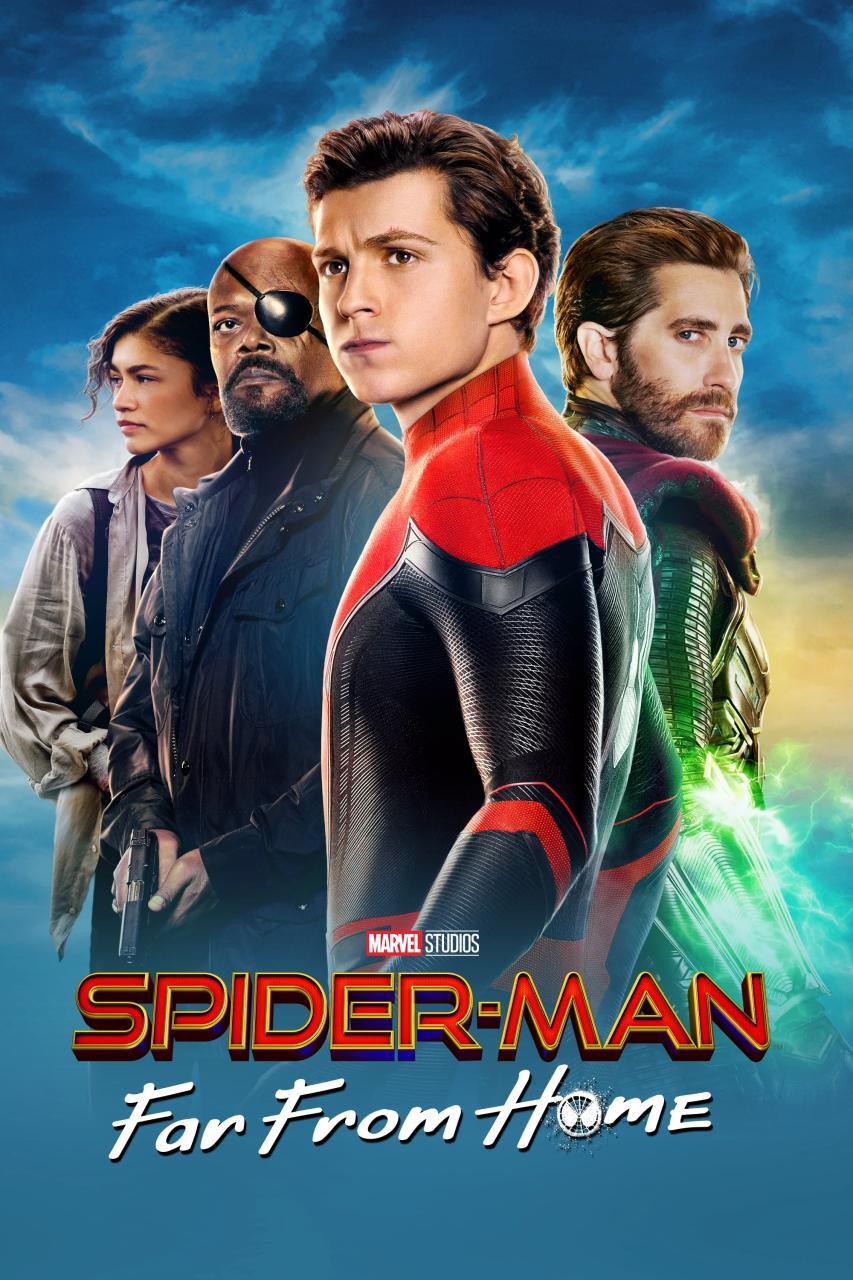
Spider-Man: Far From Home: A Behind-the-Scenes Look at the Making of a Marvel Blockbuster
Following the colossal success of "Spider-Man: Homecoming" in 2017, Marvel Studios and Sony Pictures teamed up once again to bring the beloved web-slinger back to the big screen in "Spider-Man: Far From Home." Released in 2019, the film became a critical and commercial smash, grossing over $1.1 billion worldwide and solidifying Tom Holland’s place as the definitive Spider-Man of the Marvel Cinematic Universe (MCU).
In this comprehensive article, we delve into the intricate process behind the making of "Spider-Man: Far From Home," exploring the challenges, triumphs, and creative decisions that shaped this cinematic masterpiece.
Pre-Production: Setting the Stage for Adventure
1. Story Development and Scripting:
The story of "Spider-Man: Far From Home" was meticulously crafted by a team of screenwriters led by Chris McKenna and Erik Sommers, who had previously collaborated on "Homecoming." They drew inspiration from the iconic "Spider-Man: No Way Home" storyline in the comic books, while also weaving in elements of the MCU’s overarching narrative.
2. Character Development and Casting:
Tom Holland reprised his role as the titular hero alongside a star-studded cast that included Zendaya as MJ, Jake Gyllenhaal as Mysterio, and Samuel L. Jackson as Nick Fury. New characters, such as Peter Parker’s classmate Brad Davis (Remy Hii) and Mysterio’s assistant William Ginter Riva (Martin Starr), were introduced to expand the film’s world.
Production: Capturing the Magic on Set
1. Filming Locations and Cinematography:
"Spider-Man: Far From Home" was filmed in a variety of locations, including New York City, Prague, London, and Venice. Director Jon Watts opted for a vibrant and colorful palette to capture the film’s summer vacation setting. Cinematographer Matthew Libatique used a variety of techniques, including handheld camerawork and aerial shots, to create a sense of immediacy and dynamicism.
2. Stunts and Special Effects:
The film is renowned for its breathtaking action sequences, which were meticulously choreographed by stunt coordinator George Cottle. Spider-Man’s iconic web-slinging was enhanced with cutting-edge visual effects, while the illusion of his superhuman strength and agility was achieved through a combination of practical stunts and CGI.
3. Mysterio’s Illusions:
One of the most memorable aspects of "Spider-Man: Far From Home" was the character of Mysterio, a master of illusion and deception. To bring his mind-bending illusions to life, the filmmakers employed a variety of techniques, including green screen, motion capture, and practical effects.
Post-Production: Shaping the Final Cut
1. Visual Effects and Editing:
The post-production process involved meticulously blending CGI with practical footage to create the film’s seamless and visually stunning world. Editors Leigh Folsom Boyd and Dan Lebental worked tirelessly to assemble the intricate narrative, ensuring a smooth and impactful flow.
2. Sound Design and Music:
The film’s immersive soundtrack was composed by Michael Giacchino, who drew inspiration from both the MCU’s familiar themes and the film’s European setting. Sound designer Ethan Van der Ryn crafted a rich and dynamic soundscape that enhanced the film’s emotional impact and action sequences.
The Impact of "Spider-Man: Far From Home"
1. Critical and Commercial Success:
"Spider-Man: Far From Home" opened to rave reviews from critics, with many praising its humor, action, and emotional depth. It became the highest-grossing film in the Spider-Man franchise and one of the most successful MCU films of all time.
2. Box Office Dominance:
The film’s worldwide box office haul of over $1.1 billion solidifies its status as a global phenomenon. It was a major contributor to Disney’s record-breaking year in 2019, which saw the studio release a string of blockbuster hits.
3. Impact on the MCU:
"Spider-Man: Far From Home" played a pivotal role in the development of the MCU’s Phase 4 narrative. It introduced new characters and plotlines that would later be explored in subsequent MCU films and television series.
Conclusion
"Spider-Man: Far From Home" is a cinematic triumph that showcases the best of what Marvel Studios and Sony Pictures have to offer. Through meticulous planning, talented filmmaking, and breathtaking action, the film delivers a thrilling and emotionally resonant adventure that has captivated audiences worldwide. As the MCU continues to expand, the legacy of "Spider-Man: Far From Home" will undoubtedly endure as a beloved chapter in the web-slinger’s cinematic journey.
FAQ
Q: What is the significance of the European setting in the film?
A: The film’s European setting allows for a change of scenery from New York City, providing a fresh and visually stunning backdrop for Peter Parker’s adventures. It also serves to emphasize the film’s themes of identity, deception, and the search for belonging.
Q: How did the filmmakers create Mysterio’s illusions?
A: Mysterio’s illusions were created using a combination of practical effects, motion capture, and CGI. The filmmakers worked closely with illusionist Criss Angel to design and execute the illusion sequences, ensuring that they were both visually spectacular and narratively impactful.
Q: What makes "Spider-Man: Far From Home" unique within the MCU?
A: "Spider-Man: Far From Home" is unique in the MCU in several ways. It is the first Spider-Man film set outside of New York City, and it explores the character’s emotional journey in a more mature and introspective manner than previous installments. Additionally, the film introduces a new mythology surrounding the character of Mysterio, adding to the MCU’s ever-expanding tapestry.
References
- "Spider-Man: Far From Home" on IMDb: https://www.imdb.com/title/tt6320628/
- "The Making of Spider-Man: Far From Home" on Marvel.com: https://www.marvel.com/articles/movies/spider-man-far-from-home-making-of
- "How Spider-Man: Far From Home’s Illusions Were Created" on THR: https://www.hollywoodreporter.com/movies/movie-features/spider-man-far-from-home-mysterio-illusions-1245408/
- "Interview with Spider-Man: Far From Home Director Jon Watts" on Collider: https://collider.com/jon-watts-spider-man-far-from-home-interview/





